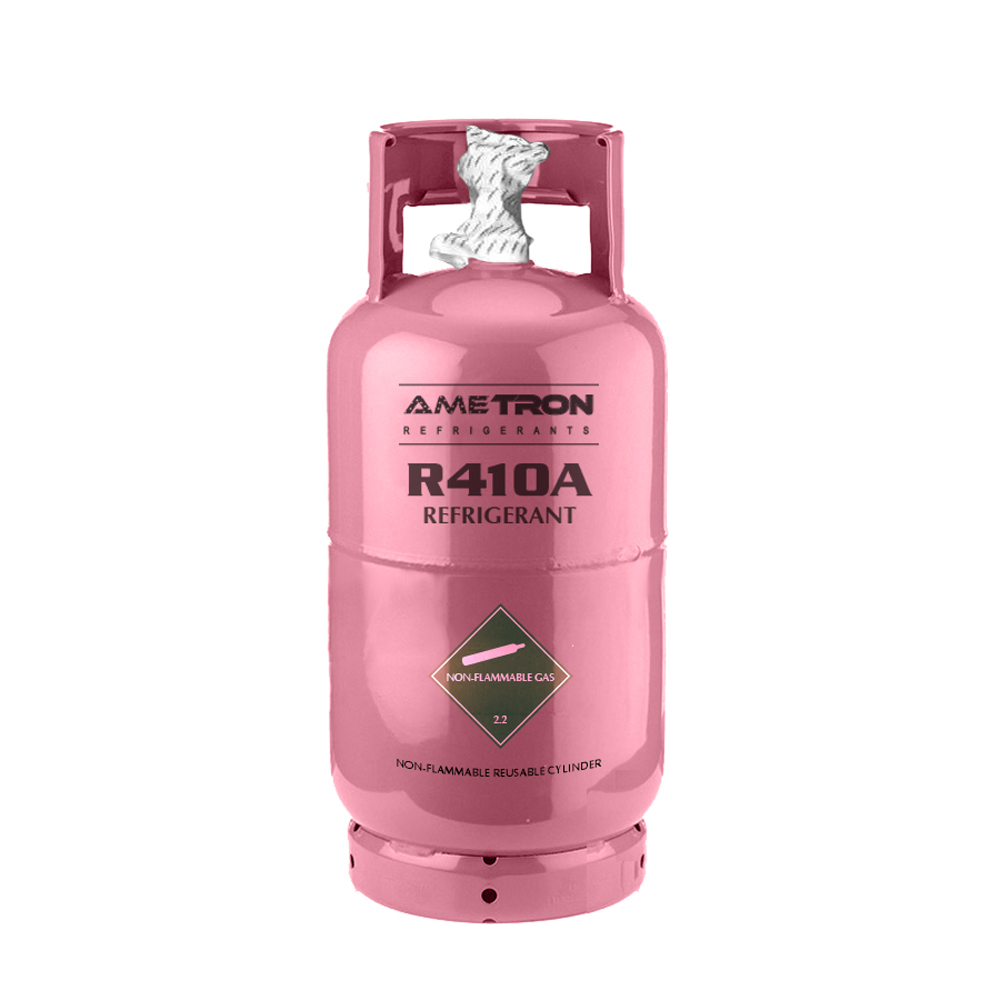If you own an air conditioner or heat pump, chances are you’ve come across the term R410A refrigerant. It’s one of the most common cooling agents used in modern HVAC systems — known for its high efficiency and eco-friendlier performance compared to older refrigerants like R22.
But what exactly is R410A? How does it work, and why are people talking about its replacement? Let’s break it all down in simple, human terms.
What Is R410A Refrigerant?
R410A refrigerant is a type of hydrofluorocarbon (HFC) used in air conditioners and heat pumps to absorb and release heat. It was introduced as a safer and more energy-efficient alternative to R22 (Freon), which was phased out due to its harmful effects on the ozone layer.
R410A is a blend of two refrigerants — R32 and R125 — and operates at a higher pressure, which allows for better heat transfer and improved energy efficiency.
Key Facts About R410A:
-
Chemical Composition: R32 (50%) + R125 (50%)
-
Pressure: Operates at approximately 1.6 times higher pressure than R22
-
Boiling Point: -51.6°C (-60.9°F)
-
Ozone Depletion Potential (ODP): 0
-
Global Warming Potential (GWP): 2088
Why R410A Became the Industry Standard
When R22 was banned under the Montreal Protocol, the HVAC industry needed a reliable replacement that wouldn’t harm the ozone layer. R410A quickly became the go-to choice because of its superior performance and safety profile.
Advantages of R410A Refrigerant
-
Eco-Friendly (No Ozone Damage)
Unlike R22, R410A contains no chlorine, meaning it doesn’t contribute to ozone depletion. -
Higher Energy Efficiency
Systems using R410A run more efficiently, cooling spaces faster and saving energy over time. -
Better Cooling Capacity
The higher operating pressure of R410A results in better heat exchange, leading to more consistent indoor temperatures. -
Improved System Reliability
R410A-compatible systems use synthetic oil for lubrication, reducing wear and tear on the compressor. -
Environmentally Safer Alternative
While it still contributes to global warming, it’s significantly safer for the ozone than R22.
The Downside: Why R410A Is Being Phased Out
Despite being ozone-friendly, R410A still has a high Global Warming Potential (GWP). With growing environmental concerns, many countries — including the U.S., Canada, and those in the EU — are moving toward low-GWP refrigerants.
The Kigali Amendment to the Montreal Protocol calls for a gradual phase-out of HFCs like R410A. As a result, manufacturers are switching to next-generation refrigerants such as:
-
R32 – lower GWP (675) and better efficiency
-
R454B – even lower GWP (466)
-
R290 (Propane) – natural and highly eco-friendly alternative
This doesn’t mean your R410A unit is obsolete; it simply means newer systems will use greener refrigerants.
How R410A Refrigerant Works
Refrigerants operate through a continuous cycle of evaporation and condensation within your air conditioner. Here’s a quick breakdown:
-
Compression: The refrigerant gas is compressed, raising its temperature and pressure.
-
Condensation: It releases heat to the outside air, turning into a high-pressure liquid.
-
Expansion: The liquid passes through an expansion valve, reducing its pressure and temperature.
-
Evaporation: The refrigerant absorbs heat from indoor air, cooling your room.
R410A’s unique properties allow this process to occur more efficiently, leading to faster cooling and lower energy use.
Safety and Handling Tips for R410A
Although R410A is non-toxic and non-flammable, it must be handled carefully because of its high operating pressure.
Safety Guidelines:
-
Always use equipment rated for R410A’s higher pressure.
-
Avoid direct skin contact with refrigerant (it can cause frostbite).
-
Never mix R410A with other refrigerants — it can damage the system.
-
Only certified HVAC technicians should recharge or service R410A systems.
FAQs About R410A Refrigerant
1. Is R410A refrigerant being banned?
Yes, but gradually. It’s being phased out worldwide due to its high global warming potential. Replacement refrigerants like R32 and R454B are taking its place.
2. Can I use R410A in an old R22 system?
No. R410A operates at higher pressure and requires different components. Mixing them can damage your system.
3. Is R410A refrigerant toxic?
R410A is non-toxic and non-flammable, but improper handling can cause frostbite or injury due to high pressure.
4. Can you still buy R410A refrigerant?
Yes, it’s still available for servicing existing systems, but production will decrease as regulations tighten.
5. What refrigerant replaces R410A?
The most common replacements include R32, R454B, and R290, all of which have lower environmental impact.
Conclusion: The Future Beyond R410A
R410A refrigerant has played a crucial role in making modern air conditioning systems more efficient and environmentally responsible. While it’s being phased out due to climate concerns, it remains safe and reliable for current systems.
If you’re buying a new HVAC unit, look for R32 or R454B-compatible models to stay ahead of upcoming energy standards. Understanding refrigerants like R410A helps you make smarter, greener choices for your home cooling system.



